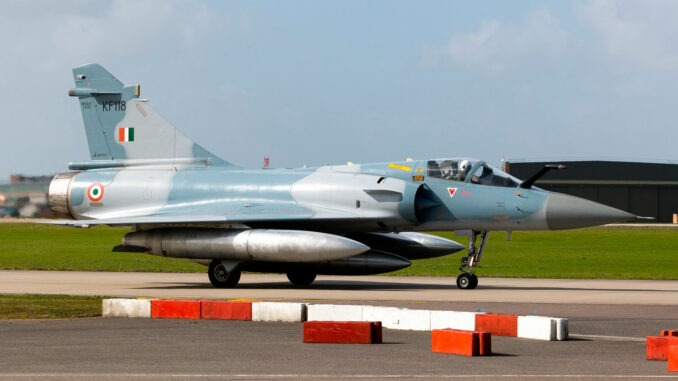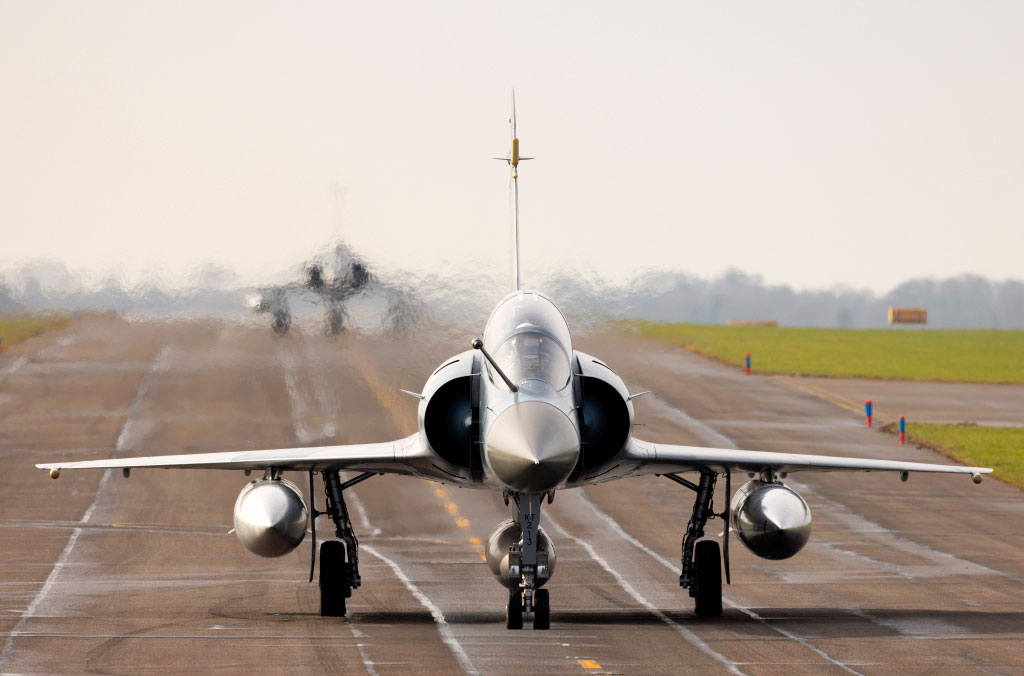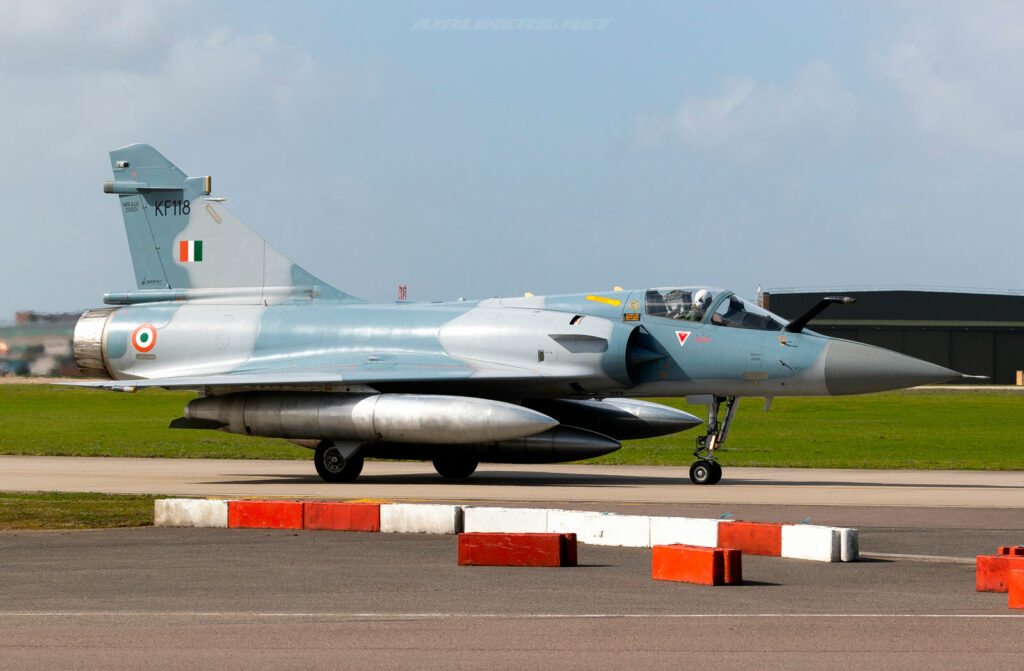
Dassault Aviation forms DAMROI to support the IAF’s Mirage 2000 fleet, further empowering India’s defense industry.
Dassault Aviation has announced the creation of Dassault Aviation MRO India (DAMROI), a new company dedicated to the maintenance, repair and overhaul (MRO) of military aircraft, in particular the Indian Air Force’s (IAF) Mirage 2000. Located in Noida, Uttar Pradesh, DAMROI is part of the “Atmanirbhar Bharat” policy, aimed at strengthening the self-sufficiency of the Indian defense industry. In collaboration with Dassault Aviation, this initiative supports the long-term future of the Mirage 2000 multi-role fighter aircraft, in service in the IAF since 1985, while creating an aerospace and defense ecosystem in India.

Dassault Aviation’s role in India’s self-sufficiency
The creation of Dassault Aviation MRO India (DAMROI) is fully in line with the Indian government’s “Atmanirbhar Bharat” policy, which aims to strengthen the self-sufficiency of the country’s defense industry. As a long-standing supplier of military aircraft to India, Dassault Aviation is playing an active part in this process, by offering India increased on-site maintenance and modernization capabilities.
One of DAMROI’s main objectives is to provide Maintenance, Repair and Overhaul (MRO) services for the Indian Air Force’s (IAF) Mirage 2000s. These operations are crucial to guaranteeing the fleet’s operational availability, while reducing dependence on foreign suppliers for maintenance and spare parts. This provides India with a local capacity for rapid intervention in the event of breakdowns or the need to modernize its aircraft.
Through this initiative, Dassault Aviation will also share its technologies and know-how with Indian industry, creating new opportunities for cooperation in the defense sector. This will not only strengthen the country’s technical capabilities, but also create a large number of skilled jobs in the aeronautics industry. The ambition is to make India a key player in the production and maintenance chain for military aircraft.
The Mirage 2000: a mainstay of the Indian Air Force fleet
The Mirage 2000, a multi-role fighter designed by Dassault Aviation, has been in service with the Indian Air Force (IAF) since 1985. This fighter has become an essential component of Indian air defense, used for both ground attack and air superiority missions. In total, the IAF owns 35 Mirage 2000H delivered between 1985 and 2005, to which were recently added two Mirage 2000TH and two Mirage 2000C, delivered between 2021 and 2022.
One of the major advantages of the Mirage 2000 is its versatility. It is equipped with nine carrying points (five on the fuselage and two on each wing), enabling it to carry a wide range of weapons, including air-to-ground missiles, laser-guided bombs and air-to-air missiles. This multi-role capability enables it to carry out a wide range of missions with great efficiency, making it a strategic asset for the IAF.
The Mirage 2000 has proved its effectiveness on several occasions, notably during the Kargil conflicts in 1999, when it played a decisive role in strike operations against Pakistani positions. These successes solidified its position as a key fighter aircraft in India’s defense. Today, the Mirage 2000 fleet is still a pillar of India’s air defense strategy, alongside the new Rafales and Su-30 MKIs.
New Rafales for the IAF
Since 2020, the Indian Air Force has also bolstered its fleet with the acquisition of 36 Rafales, manufactured by Dassault Aviation. This new-generation fighter represents a significant technological leap over the IAF’s previous fighters, particularly in terms of ground attack capability and air superiority.
The Rafale is equipped with modern weapons systems, such as Meteor missiles, capable of engaging targets at very long range, and laser-guided bombs for precise strikes against ground targets. The integration of the Rafale into the IAF fleet enhances India’s ability to carry out sophisticated defense operations against potential adversaries, while improving coordination with other aircraft, such as the Mirage 2000 and Su-30 MKI.
The Rafale acquisition is also part of a broader strategy to modernize the Indian Air Force. In addition to new air defense technologies, the IAF is focusing on strengthening its projection capability and international cooperation with strategic partners, notably France, through technology transfers and the training of Indian pilots on advanced combat aircraft such as the Rafale.
The Mirage 2000 internationally: a multi-role aircraft adopted by several nations
The Mirage 2000 is not only an iconic fighter aircraft in India, but has also been adopted by several other countries around the world. First put into service with the French Air Force in 1984, the Mirage 2000 quickly gained in popularity thanks to its versatile performance and reliability in combat situations.
Countries such as Abu Dhabi, Egypt, Greece, Peru, Qatar, Taiwan and the United Arab Emirates have also integrated the Mirage 2000 into their air forces. What makes this aircraft so attractive is its ability to be equipped with cutting-edge technologies, particularly in terms of weapons and communications systems, as well as its compatibility with modern electronic warfare operations.
Recently, Ukraine became the latest country to acquire Mirage 2000s, with France announcing in June 2024 its intention to donate five Mirage 2000s to bolster Ukraine’s defensive capability in the context of its tensions with Russia. This example shows just how relevant the Mirage 2000 remains in the world’s military aviation landscape, even nearly forty years after its initial entry into service.

The opportunities created by DAMROI for the Indian defense industry
The creation of DAMROI by Dassault Aviation represents a major opportunity for the Indian defense industry. Not only will this initiative strengthen India’s self-sufficiency in MRO, it also paves the way for increased international cooperation between France and India. Indeed, by establishing a maintenance base for the Mirage 2000, DAMROI will enable India to reduce its dependence on foreign maintenance services, while strengthening its local expertise in the aeronautical field.
This also translates into infrastructure investment and job creation in India’s aerospace sector. Local companies, working in collaboration with Dassault Aviation, will have access to cutting-edge technologies and know-how that will enable them to position themselves as key players in the global supply chain.
In the long term, this initiative could be extended to other types of military aircraft, strengthening India’s ability to independently manage the maintenance and modernization of its military equipment. This strategy is perfectly aligned with the Indian government’s ambitions to create a self-sufficient defense ecosystem and increase the share of indigenous products and services in the defense industry.
War Wings Daily is an independant magazine.